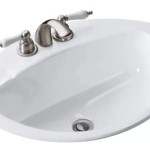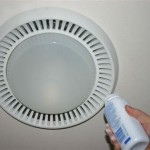Can You Change the Color Of Tiles In A Bathroom?
The question of whether one can change the color of bathroom tiles is a common one for homeowners considering renovations or cosmetic updates. The answer is yes, changing the color of bathroom tiles is possible, although the feasibility and longevity of the result depend heavily on the method employed and the existing tile material. Several options exist, each with its own set of advantages, disadvantages, and levels of complexity. Understanding these options and their implications is crucial for achieving the desired aesthetic effect without compromising the integrity of the tiled surface.
Before embarking on any color change project, a thorough assessment of the existing tiles is essential. Factors such as the type of tile (ceramic, porcelain, glass, natural stone), its condition (cracks, chips, grout integrity), and the desired color change will influence the choice of method and the expected outcome. A poorly executed color change can lead to peeling, chipping, and an overall unsightly appearance, potentially requiring costly repairs or replacements down the line. Therefore, careful planning and preparation are paramount to a successful transformation.
Tile Painting: A Cost-Effective Option
Painting is often considered the most accessible and budget-friendly method for changing the color of bathroom tiles. This approach involves applying a specialized paint formulated for use on hard, non-porous surfaces. The success of tile painting hinges on meticulous preparation and the selection of appropriate primers and paints. The process generally involves cleaning the tiles thoroughly to remove any dirt, grease, or soap scum. A degreasing agent is often necessary to ensure proper adhesion of the subsequent layers.
Following the cleaning phase, the tiles should be lightly sanded to create a slightly abrasive surface. This sanding is critical for providing the primer with a better grip, preventing peeling and chipping in the long run. The sanding process should be done carefully to avoid damaging the tile surface, especially if dealing with delicate materials such as glass or natural stone. After sanding, all dust must be removed with a tack cloth or a damp cloth to ensure a clean surface for priming.
The application of a primer specifically designed for tile or other slick surfaces is the next crucial step. Primers act as a bonding agent, creating a uniform surface for the paint to adhere to. Using the correct primer significantly improves the paint's durability and resistance to moisture, which is particularly important in a bathroom environment. The primer should be applied in thin, even coats, allowing each coat to dry completely before applying the next.
Once the primer is fully cured, the tiles are ready for painting. Epoxy-based or polyurethane-based paints are generally recommended for bathroom tiles due to their durability, water resistance, and ability to withstand harsh cleaning agents. The paint should be applied in thin, even coats, using a high-quality brush or roller. Multiple coats may be necessary to achieve the desired color saturation and coverage. It is crucial to allow each coat to dry completely before applying the next to prevent drips and ensure a smooth, even finish.
After the final coat of paint has dried and cured according to the manufacturer's instructions, a sealant may be applied to further protect the painted surface. Sealants provide an additional layer of protection against moisture, scratches, and stains, prolonging the life of the painted tiles. The sealant should be specifically designed for use on painted surfaces and applied evenly, following the manufacturer's recommendations.
While tile painting offers a relatively quick and affordable solution for changing the color of bathroom tiles, it is important to acknowledge its limitations. Painted tiles are more susceptible to chipping and scratching compared to tiles with an inherent color. The longevity of the painted finish depends heavily on the quality of the preparation, materials used, and the level of traffic in the bathroom. Regular cleaning and maintenance are necessary to preserve the appearance of the painted tiles.
Tile Resurfacing: A More Durable Alternative
Tile resurfacing, also known as tile refinishing or reglazing, offers a more durable and long-lasting alternative to painting. This process involves applying a specialized coating to the existing tiles, creating a new, seamless surface with the desired color and finish. Tile resurfacing is typically performed by professionals who have the necessary equipment and expertise to achieve a flawless result. The process is similar to painting, but the materials used are more robust and designed for higher durability.
The preparation for tile resurfacing is similar to that of painting, involving a thorough cleaning and degreasing of the tiles. However, resurfacing often requires more extensive surface preparation, including repairing any cracks or chips in the existing tiles. This may involve filling the imperfections with a specialized epoxy filler and sanding the surface smooth to create a uniform base for the new coating.
The resurfacing process typically involves applying multiple layers of a specialized epoxy or polyurethane coating. These coatings are formulated to bond tightly to the existing tile surface, creating a durable and water-resistant finish. The coatings are often applied using a spray gun, which allows for even coverage and a smooth, professional-looking result. Each layer of coating is typically cured using heat lamps or other specialized equipment to ensure proper hardening and adhesion.
Tile resurfacing offers several advantages over painting. The resulting finish is typically more durable and resistant to chipping, scratching, and staining. The seamless surface created by resurfacing is also easier to clean and maintain compared to painted tiles. Resurfacing can also be used to change the texture of the tiles, creating a matte, glossy, or textured finish depending on the desired aesthetic.
However, tile resurfacing is generally more expensive than painting and requires professional expertise. The process can also be time-consuming, as it involves multiple stages of preparation, application, and curing. It's crucial to choose a reputable and experienced tile resurfacing company to ensure a high-quality result. In addition, resurfaced tiles may still be susceptible to damage from harsh chemicals or abrasive cleaners, so it is important to use appropriate cleaning products and techniques.
Tile Replacement: The Most Permanent Solution
The most permanent and comprehensive solution for changing the color of bathroom tiles is to replace them entirely. This involves removing the existing tiles and installing new ones with the desired color, pattern, and material. While tile replacement is the most labor-intensive and expensive option, it offers the greatest flexibility in terms of design and the most durable and long-lasting result.
Tile replacement typically requires hiring a professional tile installer, as the process involves specialized tools and techniques. The first step is to remove the existing tiles, which can be a messy and time-consuming task. The grout surrounding the tiles must be removed, and the tiles must be carefully pried away from the underlying substrate. It's essential to wear appropriate safety gear, such as gloves and eye protection, during the removal process.
After the existing tiles have been removed, the underlying substrate must be inspected and prepared. Any damaged or uneven areas should be repaired or leveled to provide a smooth and stable base for the new tiles. A cement board or other suitable backer board is typically installed to provide a moisture-resistant surface for the tiles to adhere to.
The new tiles are then installed using a thin-set mortar, which is applied to the backer board and the back of the tiles. The tiles are carefully positioned and spaced according to the desired layout, and any necessary cuts are made using a tile saw. Once the tiles are in place, they are allowed to set and cure according to the mortar manufacturer's instructions.
After the mortar has cured, the grout is applied to fill the spaces between the tiles. The grout is spread evenly across the surface and then wiped clean with a damp sponge. The grout is then allowed to dry and cure, and a sealant is applied to protect it from moisture and stains.
Tile replacement offers several advantages over painting and resurfacing. It allows for complete customization of the bathroom's aesthetic, with a wide range of tile materials, colors, and patterns to choose from. Replaced tiles are also highly durable and resistant to damage from moisture, chemicals, and wear and tear. Furthermore, tile replacement can increase the value of the home, as it is considered a significant improvement.
However, tile replacement is the most expensive and time-consuming option. It also requires the most disruption to the bathroom, as the area will be unusable during the removal and installation process. It's crucial to hire a qualified and experienced tile installer to ensure a professional and long-lasting result. In addition, homeowners should carefully consider the cost of materials, labor, and disposal fees when budgeting for a tile replacement project.
Ultimately, the best method for changing the color of bathroom tiles depends on a variety of factors, including budget, desired durability, and the homeowner's DIY skills. Painting offers a cost-effective and relatively simple solution for a quick cosmetic update, while resurfacing provides a more durable and professional-looking finish. Tile replacement, though the most expensive and labor-intensive option, offers the greatest flexibility and longevity. Careful consideration of these factors will help homeowners make an informed decision and achieve their desired bathroom aesthetic.

Can You Change Tile Color Without Replacing It Maryland Tub

Is Ceramic Tile Refinishing Worth It

Yes You Can Paint Shower Tile And It Won T L Porch Daydreamer

Yes You Can Paint Your Bathtub And Tile Here S How Toolbox Divas

You Can Paint Tile I Will Show How To And Stencil

Ceramic Tile Doesn T Have To Be Replaced Miracle Method Can Refinish Over Multiple Surface Includi Painting Bathroom Tiles Renovations

One Room Challenge How To Paint Shower Tile Updated Your Ugly Dated For 50

How To Paint Over Tile Average But Inspired

How To Paint Tiles 3 Easy Steps Transform Dated On A Budget

From Ugly To Wow How Paint Bathroom Shower Tile
Related Posts







